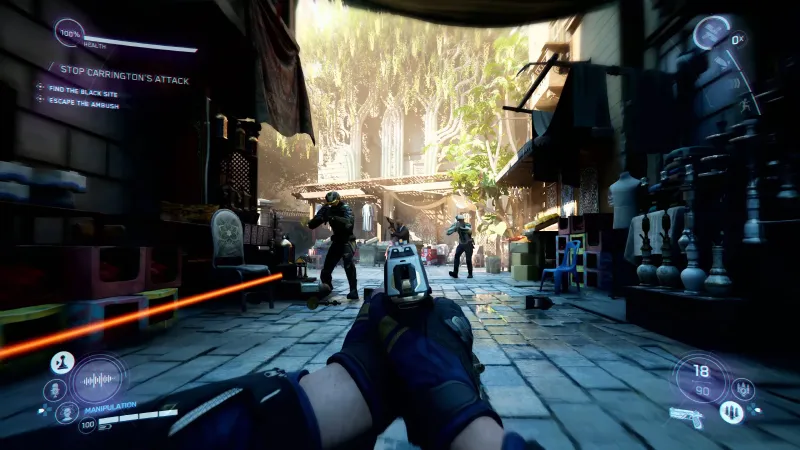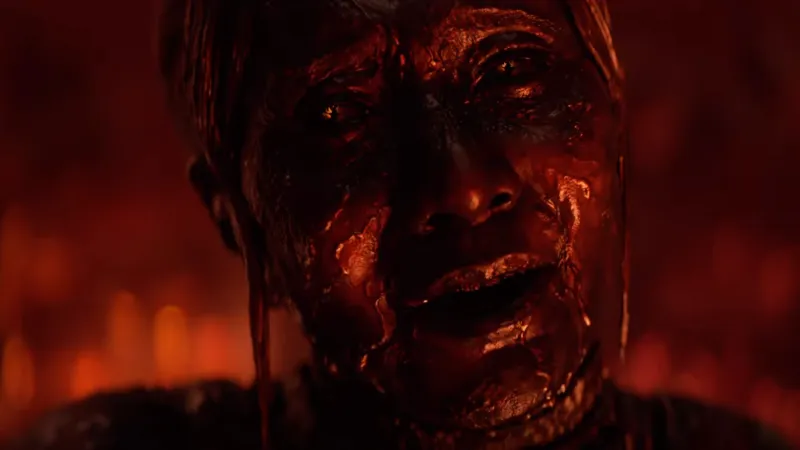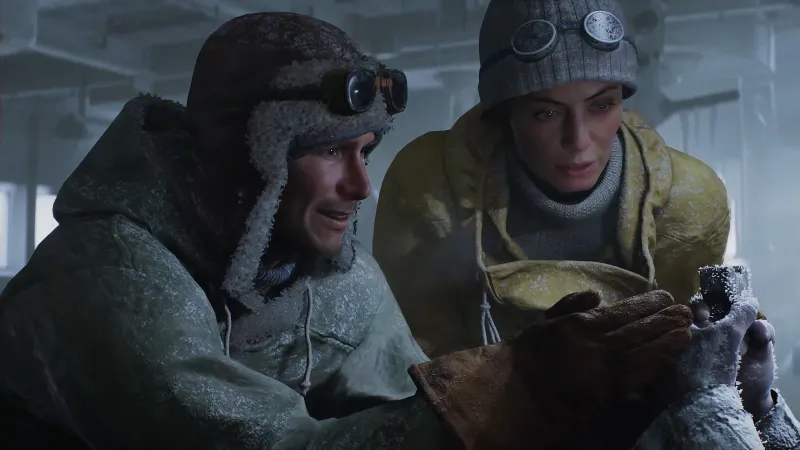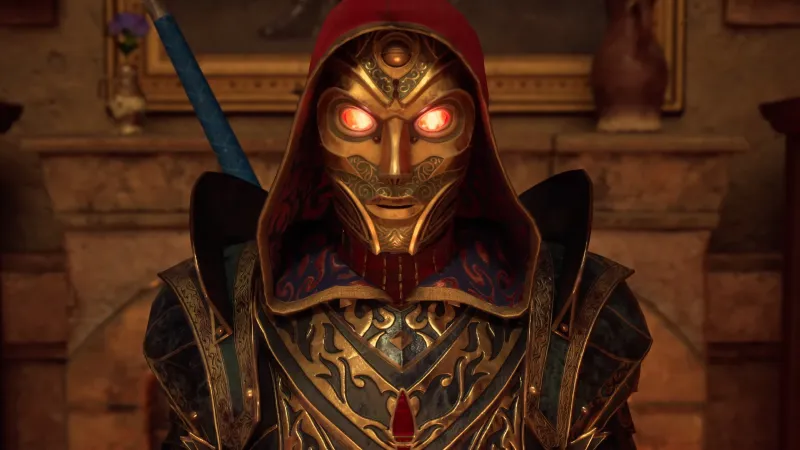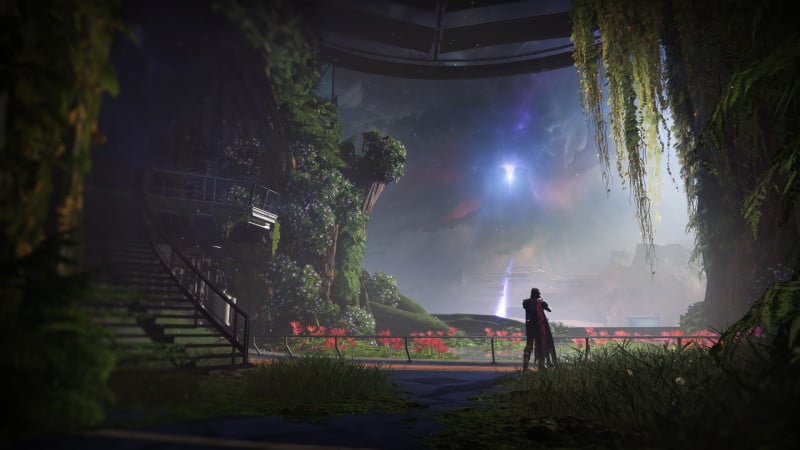When I first played Astro’s Playroom on the PlayStation 5, I was blown away by its gorgeous art style, engaging level design, and overwhelming charm. Each level was so carefully packed with easter eggs and fun platforming challenges that I assumed it was a positive side-effect of the game’s short playtime; the only way so much delight could be crammed into each stage was because the development team only had so many levels to work with, so a longer game would probably feel less impressive. But after going hands-on with Astro Bot, the full-fledged sequel from Team Asobi, I can confidently assert this was not the case. If the rest of the game is anything like the short snippet I played, it’s teeming with joy.
The game opens in the world map, the void of outer space. Astro can maneuver the area using a spaceship shaped like a Dualsense controller and visit one of six galaxies: a red octopus, a blue gorilla, a purple bird, a yellow lizard, a green snake, or a rainbow swirl. Most of the options are locked for the demo, so I head into the only one I can, the red octopus, and start the first level, Sky Garden.
A floating tropical paradise, Sky Garden is a level made of beaches, palm trees, and pools of water. The gameplay starts with a short flying segment in a sky full of flamingos and Astro’s ship, which I control by tilting my Dualsense controller. As soon as we touch down, I refamiliarize myself with the controls, which are unchanged from the tech demo. I can punch robot enemies to pieces or hover over them to blast them with my laser feet, and both abilities feel as good as I remember. As I progress through the level, I go down a huge water slide, accompanied by a happy horde of brightly colored beach balls.
It’s here I encounter the first power-up – a beach ball backpack ability that sends Astro hurtling into the sky. I use it to reach a puzzle piece being carried by a flying flamingo, and you can even use it underwater to rapidly ascend to the top. The underwater ascension is particularly helpful after I discover a hidden Astro Bot (there are seven total in the level to rescue) at the deepest part of a lake and need to return to the surface. The experience of activating the ability with R2, which offers just enough resistance to feel significant, elevates the whole section, and I fly through the end of the level.
The second stage is called Construction Derby, and is set in a planet consisting of an active construction zone. After a few seconds of exploring the area, a massive robot gorilla emerges in the distance, wrecking buildings in its wake. It leaves, and I expect a boss fight to come at the end of the level, but I am greeted with no such encounter – perhaps it’s the same gorilla I saw in the blue galaxy on the overworld map.
The stage is a blast to explore, complete with little gorilla-themed enemies, a magnet item I use to throw clusters of iron ingots at targets, and a dog backpack ability, which allows me to blast forward through the air to break certain objects and complete platforming challenges. This is the second power-up in as many levels, and it feels just as good as the first. I also find my way into a hidden room where I have to use paint to coat otherwise invisible platforms, which allows me to climb to the top and meet a bot dressed as Parappa the Rapper. When the level comes to an end, that bot and the other bots I saved blast off with Astro back into the overworld map. Meanwhile, my dog backpack gets a cute little robot doghouse, which it is understandably thrilled about.
The final level is a boss fight against a formidable red robot octopus, Wako Tako. Luckily, I am armed with my third power-up of the demo, a pair of robot frog gloves that I can use to punch, grab, and swing on things in the distance. But Wako Tako is no joke – it assaults me with boxing gloves on its tentacles, which come from above and below, shooting up through the sand that makes up the island I’m standing on. Luckily, I’m able to hit weak points on its gloves and snorkel, causing it to retreat and force me into a platforming gauntlet where I have to make sure to avoid sweeping tidal waves that one-shot me if I’m too low to the ground.
When I finally reach it, there’s just one more phase. I smash both of its eyeballs, grab ahold of its tears, and use the frog gloves to slingshot me into its face, blasting it into the distance Team Rocket-style. If Astro wasn’t an adorable little cartoon, this would be pretty brutal.
Now that Wako Tako is gone, I can see a capsized rowboat in the distance, so I approach it. When I flip it over, Kratos and Atreus appear, grateful that I saved them from the monster, and the three of us hop on the Dualsense controller and rocket off into the sky. Back on the hub world, I see that a new level has been unlocked, and it appears to be based on God of War: Ragnarök. Sadly, I can’t access it during this demo, so I’ll have to wait for the full game’s release to see what it’s like.
The last thing I do is visit two new levels that appear, one based on a red circle and another on a blue X, and each is a small platforming challenge. Once you practice and properly learn how to do them, you can beat each level in just under a minute, but they’re much more difficult than the base levels and take some getting used to. I manage to clear the red level, which is based around icy floating circles, but I don’t get a chance to beat the time-slowing challenge in the blue level before my demo time is up.
I entered the preview with high expectations, but as I left, those expectations were somehow exceeded. Astro Bot is poised to be one of the highlights of the PS5’s already impressive library, and the sections I played were easily comparable to some of the other titans of 3D platformers. The game will launch on September 6 as a PS5-exclusive.
